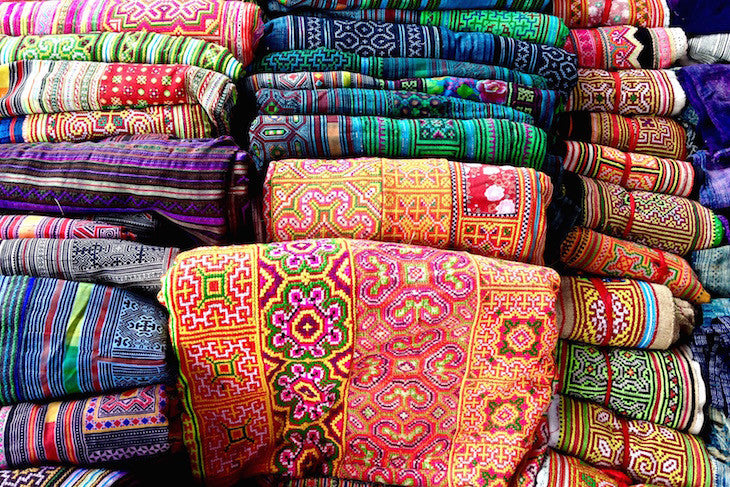You’ll often spot Hmong people in travel brochures, Asian fashion edits and publicity material – due to their iconic, vibrant clothing. Traditional Hmong garments, worn by people across the world, feature complex patterns, embroidery, indigo batik and bright, eye-catching colours; and they’ve been inspiring travellers and fashion-followers alike for years.
However, there’s more to the Hmong than their clothing. Read this article to learn more about their fascinating history, culture and traditions, and how their fabrics still continue to be worn today.
The Origins of the Hmong
The Hmong claim to originate from the Yellow River region of China, in around 3000 BC; though some experts state it was later than this. It wasn’t until the 1800s that they began to migrate; first spreading to Indochina, then to Northern Laos, Burma, Thailand and Vietnam, to avoid oppression.
After the Vietnamese war, many more Hmong people migrated to Thailand as refugees. However, due to the fact that several had joined the communist party during the war, they were persecuted. To this day, some are still denied citizenship rights, or proper titles to the land they cultivate.
In the 21st century, there are Hmong people living across the world; including Australia, France and the US. However, 95% still live in Asia.
Culture
The Hmong have a rich, fascinating culture. Traditionally, a shaman leads the tribe, and plays a vital role in the complex funeral and marriage rites. During times of illness, he will enter a trance to visit the underworld and relocate the soul of the ill person in question; and at times, he even undertakes a political role within the village.
The New Year is particularly important to the Hmong, and is celebrated on the 30th day of the 12th lunar month. During this time, the family and ancestral spirits are honoured; and unmarried boys and girls are encouraged to play games together, in the hope of sparking a marital match.
The Importance of Textiles
Textiles play and integral role in Hmong culture. Indeed, they’re considered so important that girls as young as five are taught to embroider, to prepare them for the task of creating marriage and funerary fabrics in later life. They learn how to perform the more complex processes of indigo dying, garment construction and applique at a later stage.
Hmong Fabrics – Story Cloths
Hmong fabrics are renowned across the world; thanks to their rich colours and intricate designs. Their story cloths are particularly celebrated. Prior to the 20th century, the Hmong had no form of written language, and instead, communicated ideas and narratives onto beautifully intricate pieces of cloth.
This practice wasn’t limited to females – even the male members of the village would create story cloths, to convey the story of their people to the outside world, and in some cases, to reveal the extent of their persecution.
Flower Cloths (Paj Ntaub)
Their flower cloths (sometimes referred to as rose cloths) are also prized throughout the globe, and feature a range of patterns that are important to the Hmong culture, with evocative names like ‘elephant’s foot’, ‘tiger’s face’ and ‘bird’s wings’.
The name ‘flower cloth’ derives from the Hmong belief that, if they wrapped their babies in these pieces of fabric, they would be disguised as flowers, and evil spirits wouldn’t be able to steal them.
Modern Interpretations
As global tourism developed, more people visited the Hmong tribes of Asia, and fell in love with their spectacular garments and fabrics. Over time, their rich patterns, indigo dyed materials and detailed embroidery began to be incorporated into modern garments, and valued by a new generation of people.
The Hmong’s remarkable talent with textiles has left a powerful legacy, and many choose to wear Hmong-inspired garments in recognition of their visual appeal and cultural importance. If you’d like to explore our range of Hmong-inspired clothing, simply click here.

